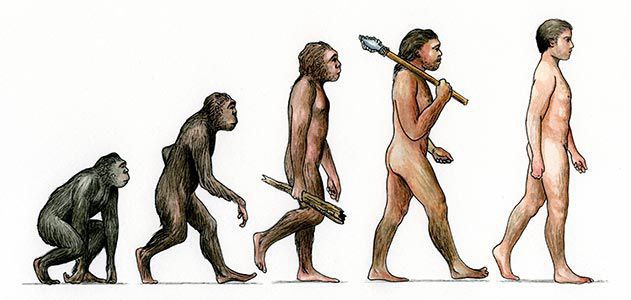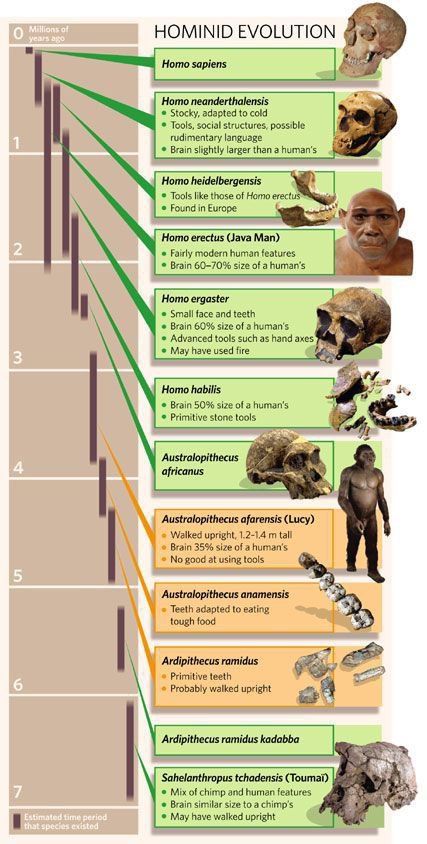|
K A N I S R E X - H O M O S A P I E N S S U P E R I O R
SEE THE CAPTAIN'S LOG OR RETURN TO BASE
|
|
|
|
The evolution of modern man from early primates
On one of his adventures, John is accidentally injected with a DNA crafted virus. This changed his genome, making him exceptionally strong, with side effects. Since the virus had not been formulated for him especially. Later, have stumbled across the technology to re-programme his DNA, and using his database, 'The Ark,' John, with help from Dan Hawk, is able to re, re-programme his DNA. This time with a virus that is crafted for him personally.
The idea, and perceived to be quite necessary, was to take out the modifications that changed his character, or could change his character if not dealt with.
Though borderline, 'Baron von Victor Frankenstein,' John is fascinated by the fact that he has, in effect, created another species of hominid, that he calls, Homo Sapiens Sapiens Superior, or Kanis Rex. Kanis Rex™ is the file name for the genome formula, that improves on the virus he assimilated accidentally in Manaus. Tailoring enhancements that do not cause imbalance. For example, where Panama, the Running Man, is held to be psychotic.
John would not normally interfere with nature, but feels that as the events that unfolded in Manaus were beyond his control, and as another human had created a means by which man could master his own destiny, that it was then morally acceptable to correct any defect in the viral serum he had been injected with.
John becomes physically and mentally superior at DNA level. Ideal to take advantage of the CyberCore Genetica™ and bio chip interface with nano computer technology. Combined with his BioCore™ brain implant, John also has the ability to communicate using just his thoughts, a virtual kind of telepathy.
John Storm's collection of DNA is stored in The Ark, the world's most powerful interactive digital DNA library. The integrated system is loyal to John Storm, coded to recognize and protect him, and authorized members of the crew.
HOMO SAPIENS SAPIENS
Homo sapiens sapiens, in anthropology and paleontology, the subspecies of Homo sapiens that consists of the only living members of genus Homo, modern human beings. Traditionally, this subspecies designation was used by paleontologists and anthropologists to separate modern human beings from more-archaic members of Homo sapiens. H. s. sapiens is thought to have evolved sometime between 160,000 and 90,000 years ago in Africa before migrating first to the Middle East and Europe and later to Asia, Australia, and the Americas.
The introduction of a physically and mentally enhanced human, who is capable of reproducing, could herald disruptive ramifications of immense proportions in the scientific community. But only if when procreating, a suitable partner is selected, that effectively ensures non-dilution of the enhancements, as a return to H. s. Sapiens, as distinct from Homo Sapiens Superior.
Other groups have been classified as subspecies of H. sapiens - including Neanderthals (H. s. neanderthalensis, which most researchers later reclassified as the species H. neanderthalensis) and a group of specimens that were later placed in the species H. heidelbergensis.
Humans (Homo sapiens) are the most abundant and widespread species of primate. They are a type of great ape that is characterized by bipedalism and exceptional cognitive skills due to a large and complex brain. Humans are highly social and tend to live in complex social structures composed of many cooperating and competing groups, from families and kinship networks to political states. As such, social interactions between humans have established a wide variety of values, social norms, languages, and rituals, each of which bolsters human society. The desire to understand and influence phenomena has motivated humanity's development of science, technology, philosophy, mythology, religion, and other fields of study.
|
|
This website is Copyright © 2022 Jameson Hunter Literary Agency
|

